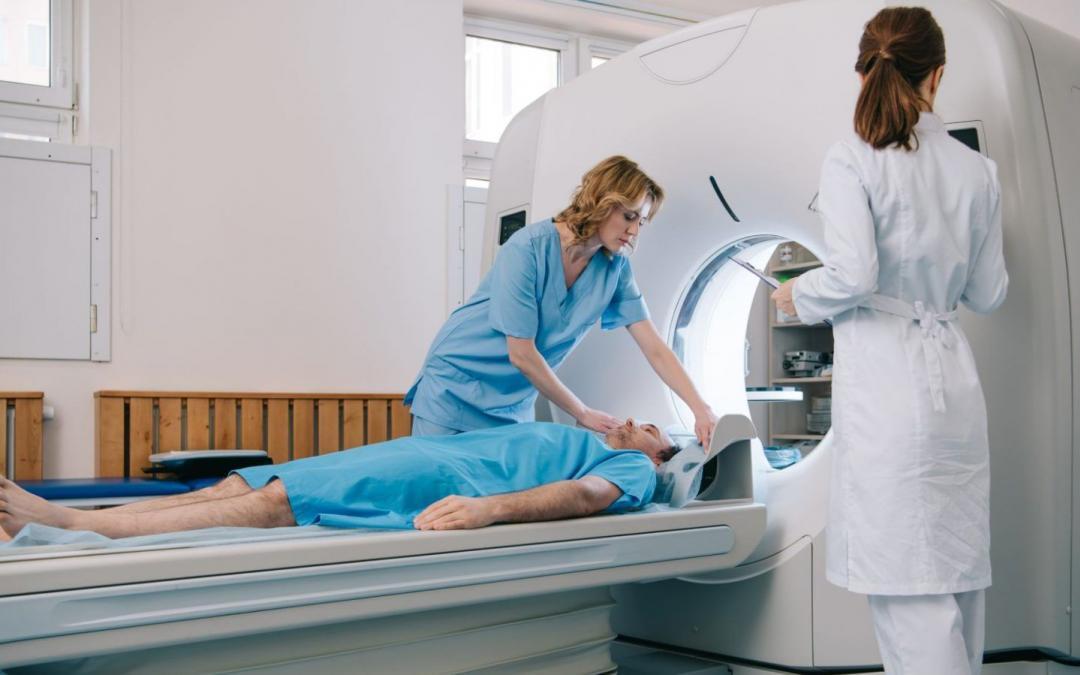
by Josh Seaman | Dec 3, 2021 | Employment Agencies, Recruitment Agencies, Sales & Account Management
After a student’s accounting education, it is time to look for an accounting position. For many young people, finding a job is a significant concern at this stage in life. In light of the lack of employment options, they find it challenging. The good news is that if an applicant knows where to search, finding a job is not that complicated.
When seeking work, use all available resources, such as a headhunter or an employment agency, local newspapers, and, of course, the internet.
Three valuable resources of job opportunities in accounting
Begin by logging on to the web. So if an applicant is looking for a career in accounting, they may look for it online. A location filter is available on the majority of these sites. After that, all they have to do is type in “accounting” as a search term. Accounting-specific employment boards are found online if someone does research. These websites may help an applicant find a career in accounting that fits their needs. If they can get a job online, there is no reason to search for one elsewhere. ‘
Second, if applicants’ web search for accounting jobs fails, they must check out the local newspapers. In most cases, local businesses looking to hire accounting graduates prefer to advertise in the local newspaper rather than on the internet. Local newspapers may also be a source of employment.
Job seekers must try looking through the classified advertisements. Accounting jobs may be found under the section titled “Accounting Jobs.” They have to check the classified ads for employment vacancies and note their location and any specific criteria. All pertinent contact information must be recorded. As a reminder, unless otherwise noted, applicants will be applying directly to the employer and not through an employment agency.
Headhunters and job agencies are the third alternative. Get aid in finding a job from an employment agency. When it comes to charging for their services, some organizations demand a charge while others do not. Clients pay these firms to do interviews, so the applicant has a good chance of landing a job, especially if they are qualified. A good employment agency is essential.
Points to keep in mind when looking for an accounting position
The only thing left to do is to put in the time and effort to hunt for particular work chances now that a job seeker is familiar with these three excellent sources of job prospects. It is possible to get the accounting career the applicants always wanted with a bit of patience, hard work, and devotion.
Hoping all job seekers the best of success in their search for a position in accounting. The best way to get an application recognized is to put up a well-written resume. There are, of course, several institutions and universities that produce accountants each year. Finding a job requires having a high level of competitiveness. Nothing will happen if someone does not do anything. The sooner a person act, the better.

by Josh Seaman | Nov 30, 2021 | Employment Agencies, Recruitment Agencies
With the constant and continuous rapid growth of The Internet, finding work opportunities has never been easier than it is right now. Candidates for employment who use the Internet may simply pick work opportunities of their choice in the area of their preference.
When job seekers click the computer mouse, they can access a vast list of job opportunities that are literally at their fingertips. Years ago, the only way for job hopefuls to find opportunities was to peruse classified ads in their local newspaper. Job seekers who want to apply outside their state should have access to the classified ads of the state of their choice.
The advantages of Internet-based employment opportunities
Subscription accounts for job seekers are one of the best aspects of online job searching. The cost-free membership accounts offered by these recruitment agencies have helped millions of people find their dream jobs. Additionally, an account in the job portal enables candidates to input their details, contact information, education and learning background, and previous work history directly into the website’s database.
Compare this with how things were done a few years or even a few decades ago. To acquire a job, applicants had to create a complete cover letter separately. They also need to print out their curriculum vitae and submit it through a job post. Doing all this stuff is not a challenging task to do. It limits the job applicant’s alternatives and slows down the application process, regardless of whether it reaches the company. During that era, the postal service did not have such a brilliant document.
There is no doubt that searching for work online is not just cost-free. It saves time. It does not matter whether an employer is at work or not! The employment website is available to all job-seeker members around the clock, seven days a week.

by Josh Seaman | Nov 26, 2021 | Employment Agencies, Recruitment Agencies
We despise the idea of someone hurting themselves or others. However, the truth is that we live in a nation with one of the highest rates of financial fraud, such as corruption, fraud, and theft, among others. However, this is just the start.
In today’s employment world, a business must deal with employee theft, incompetent recruitment, sexual assault, and workers’ compensation fraud, to name a few issues.
For example, Australian mining giant BHP has fired or banned nearly 50 employees over reports of sexual harassment in the workplace.
Is it any surprise that pre-employment screening has become a requirement? Employers want to avoid employing criminals. They also want to hire the best-qualified individual for the position. A trustworthy agency may gather information about applicants through a thorough background check. Agencies may use their established screening procedure to figure out facts about the applicants.
Essential Points to Consider When Choosing an Employment Screening Firm
When picking an employment screening company, seek one that has been in business for a long time and has a track record that several customer references can prove. Professional registrations in associations like ASIS, SHRM, PIHRA, NPRRA, and NAPBS, to mention a few, should also be considered.
Companies should be well-versed in the law; if not, the screener should be in the background screening process rules. It helps if the firm that the employers hire has a thorough understanding of “negligent hiring.” Much as an Expert Witness would. It will be the expert witness who uncovers the flaws in any hiring process that allowed the negligently recruited employee to come on board in the first place!
Does the prospective screener have knowledge and understanding of current HR Management systems? How about corporate Due Diligence programs or Factual Employment Screening programs that train people to find fraudulent applications and false identities?
In other words, can the company’s partner assist them in avoiding unnecessary lawsuits? Companies are putting their firm in danger unless they or someone in the organization is an expert in employment law.
The Importance of Proper Documentation
Let us imagine a company presently employs an employment screener that does not need them to submit each application with a signed release. It seems to be just ordinary. The fact is that these organizations have the company waive their obligation to them in order for them to save the time and effort needed in this crucial step.
In times of audit, companies must provide a signed application. They are held accountable if they do not have one on file. A reputable employment screener signs off on these audits, and companies will never know when they happen. A typical lawsuit of this kind might cost the business thousands of dollars. Is there any compelling reason to accept such a risk?
In the upcoming issue, we will debunk numerous popular background check fallacies and provide employers with the facts, like what they need, such as a complete applicant identification procedure, financial and driving histories, and hand-researched criminal court records. We will also teach employers how to utilize this data to make the most informed recruiting choices possible.

by Josh Seaman | Nov 23, 2021 | Employment Agencies, Recruitment Agencies
A Curriculum Vitae is a one or two-page document outlining an applicant’s career goals, professional accomplishments, and educational history. While job seekers can format their Curriculum vitae in various ways, there are two primary resume styles: sequential and practical.
What is a Chronological Curriculum Vitae?
As the name indicates, a chronological resume presents an applicant’s experience and education in chronological sequence, beginning with the most recent positions or accomplishments. The listing sequence begins with the applicant’s present job. This resume is also known as a reverse chronological resume. Employers will want to know what employment the job seeker now has to analyze better the applicant’s credentials for the career of their choice. Hence this sort of resume is preferable. The same is right of the applicant’s academics. A prospective employer would want to hear about the job seeker’s most recent academic accomplishment.
In addition, including the applicant’s experience and education in reverse chronological order demonstrates their overall career progression to their future employer. It also displays any gaps in the applicant’s career and helps identify the amount of time spent at each company (in case of gaps, the applicant must make sure to address them in the cover letter so as not to lead the employer to believe that the applicant is omitting information on purpose).
In a chronological resume, the applicant should include their present position and two to four past jobs. If the applicant’s work history is extensive or has had roles relevant to their current career goal in the past, they may emphasize these qualities in their professional profile or cover letter. The most frequent kind of resume is the chronological resume, appropriate for anybody with some professional experience.
What is a Functional Curriculum Vitae?
Functional resumes place a greater emphasis on an applicant’s skills rather than their work history. This resume format emphasizes their abilities rather than where or when they learned or used them. In other words, perhaps stating the applicant’s job titles, their curriculum vitae will include sections named after their competencies, such as oral and written communication, customer service, project management, and so on.
This resume format is ideal for college students looking for internships or their first job after graduation and people with no professional experience, those who have not worked in a while, or career changers. While prospective employers would appreciate a summary of the job seeker’s competencies, if the applicant has any professional experience, they should consider utilizing a chronological or combination resume instead of a functional curriculum vitae.
Even though not often mentioned, a combined curriculum vitae has become a popular style in recent years. It is a blend of chronological and functional resume styles, as the name indicates. This blended format enables professionals to showcase qualifications that are important for the position they want while still providing their work and educational experience in reverse chronological order. Please take note that while utilizing a combination resume, any applicant must not attempt to accomplish too much by getting carried away with the kind and volume of parts they include. Even in a combination structure, limiting the content to what is relevant to the job is preferable.
Each style follows the same set of guidelines. Do not write more than two pages. To secure the interview and finally the job, an applicant should personalize their Curriculum vitae in line with their professional goal and give their best.

by Josh Seaman | Nov 19, 2021 | Employment Agencies, Recruitment Agencies
Look Into Your Potential Employer’s Background
Businesses and employers conduct background checks on applicants and workers to avoid hiring errors and litigation. However, if a job seeker comes across an opportunity with a certain firm, they must do their research! Applicants should complete an employment background check on any organization they plan to develop a connection with if they apply for a position.
By doing so, applicants will know if the company indeed has a good reputation, as they claim. Job seekers may also want to be associated with a company licensed correctly in the state and federal government laws, without liens, bankruptcies, judgments, or civil actions involving the company’s principles. Applicants are perfectly justified in conducting a background search.
By conducting a background check, candidates will determine whether the company has an excellent reputation, which is something they say. Job seekers may also desire to work for a legally licensed firm under state and federal laws, with no liabilities, bankruptcies, judgments, or legal lawsuits involving the company’s principles. Applicants have the right to do a background investigation.
Three Steps in Doing an Employer Background Research
- Authentication of the company’s reputation
Records in the local area where the firm is based can provide a great deal of valuable information.
Aside from international corporations, every local business or enterprise has ties to the local community. Local companies follow the local community’s regulations and ordinances with great care. That is why the records in the local area where the firm is based can provide a great deal of valuable information.
Applicants can generate primary sources of information about the company. They can also find Articles on the firm, its framework, and values in local and national newspapers.
- Confirmation of the company’s Credibility
Job seekers must ask for references while doing a background check. Through background checks, applicants will be able to double-check any information they can uncover.
Applicants can obtain helpful information about the employer by asking current employees of the company. These workers may be able to give the applicant accurate information about the manager and their firm. Applicants may also inquire about the company’s working terms mentioning what they heard and asking about what exists.
Business Licensing: Find out whether the company has a license to operate and abides by local employment rules. Applicants may check this by checking if they have a license number on their business cards. They can verify this by checking with Business Licensing and Information Service office or through their website.
If the company has no license to operate, they are most probably not implementing correct employment guidelines.
- Investigating the company’s history and values
The applicant may also investigate the company’s history to learn more about it. They may also be interested in learning who determines the company’s major decisions. Find out whether they have had to deal with any labor problems or lawsuits. It is always preferable to work for a company that does not have a credibility issue with its employees.
Job seekers can also look at the company’s court records, lawsuits and judgments, bankruptcy filings, and tax liens in more detail.
It is also essential to do a criminal history background check if every person has a criminal record. Applicants may also investigate the company’s court records, lawsuits and judgments, bankruptcy filings, and tax liens in more detail.

by Josh Seaman | Nov 16, 2021 | Medical, Employment Agencies, Recruitment Agencies
Radiologic (x-ray) technology is a fantastic career option for individuals interested in the allied health industry. An x-ray technician is also known as a radiologic technologist. They are the ones performing diagnostic x-ray procedures in hospitals, physician offices, and outpatient imaging centres.
How to Become a Radiologist in Australia
An x-ray technician must complete 2-4 years of training in a recognized college or hospital-based radiologic technology program. They will have an academic education supplemented with hands-on professional training in a clinical setting. The student must fully understand radiographic physics and anatomy, radiation safety, optimal patient placement and technique, quality control, darkroom abilities, infection control, sterile technique, body mechanics, and patient privacy. A successful student will also have excellent communication skills and the capacity to adjust to new conditions easily.
After completing the program, the x-ray technician will be eligible to take the exam and register with the Medical Radiation Practice Board of Australia. It is a comprehensive examination that will cover many of the skills required of an x-ray specialist. If the student passes the registry examination, they will add the designation “RT” to their name, indicating that they are a registered radiologic technician. Radiologic technicians are required to be licensed by the different states. State licensure and continuing education standards differ from one state to another; however, aspiring radiologists must possess a state licence.
Why Become a Radiologic Technician?
Because of our ageing population’s healthcare demands, radiologic technicians’ job prospects are expected to stay high. While hospitals employ most x-ray technologists, independent imaging centres and outpatient clinics also employ a substantial number. Others could work in private physician practices, including orthopaedic or urologic practices, mobile x-ray services, and sales staff.
By obtaining expertise in specialized diagnostic imaging fields, the x-ray technician has various prospects for development. MRI, CT scan, mammography, and interventional radiology are only a few of them. Specialized training is required in these industries, obtained through on-the-job training or other college or trade school-based programs. The technician will take an extra registration test for the specializations mentioned above to show that they are knowledgeable in that field. In general, the more specializations an x-ray technician can demonstrate proficiency in, the more job opportunities he or she will have.







Recent Comments